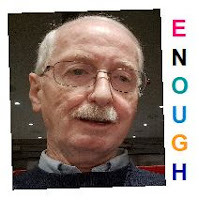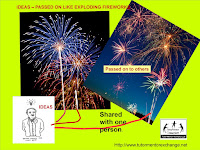For many years I've posted articles describing the information-based problem solving strategies that I've piloted since forming the Tutor/Mentor Connection in 1993, and Tutor/Mentor Institute, LLC in 2011.
Since 2005 I've communicated my ideas using concept maps, created using free cMapTools. Below is one of those. Open the map at this link.
This map includes three elements.1) The "mentoring kids to careers" graphic focuses on the 10-16 years of age-specific support needed to help kids living in high poverty areas move through school and into jobs and careers.
2) There's a small inset of a map of Chicago, with high poverty areas highlighted. In my last article I focused on using maps to understand where help is needed and to guide distribution of resources to all of these places.
3) The right side of the concept map shows many of the challenges that kids, families and schools in high poverty areas face. Each of these needs to be understood, then addressed.
What my maps do not have is a narration on the maps that explains what the viewer is looking at. That could be fixed with an audio narration, or perhaps by using a different tool than cMapTools. Below I'm pointing to some options. I've tried to explain some of the maps with articles like this one and, this one.
In the lower left corner of the concept map shown above, I wrote, "This information focuses on challenges facing youth in the United states. What would this map look like for youth in Asia, Africa, Middle East, Europe, Central and South America? Create your own version!"
Someone did! But I don't think this was inspired by my work.
Yesterday, I found
Pierce Gordon who has used a different visualization tool, called KUMU.io, to create a visualization that focuses on Systems Thinking and Youth Unemployment in Botswana, Africa. The graphic below is from that presentation.
I was alerted to this through a post I saw on Twitter (X).
This Twitter (X) post includes a video that provides a quick overview of the analysis. I encourage you to view it.
Then visit the
KUMU page on LinkedIn where they announced the presentation and provided
this link to the KUMU project shown in the video.
Here's another systems map, shared with me by Pierce Gordon. It is an "interactive Youth Employment System Map. Designed in 2021. It is the f
irst attempt to map the youth employment system in England. It provides a visual representation of the barriers and opportunities young people from marginalized backgrounds face as they seek good jobs." Visit
this page and then follow the link to the causal loop map. There are great explanations for how to use this, and why.
Spend as much time as you can to look at these presentations, then connect with Pierce, or Kumu, or both and learn how you can make similar visualizations.
Then, take a look at some of the past articles I've posted about mapping complexity.
In
this 2018 article my headline was "Wicked Problems. Getting "Everyone" in the Room. Who cares?
When we started building our list of Tutor/Mentor programs in 1993, we also began building a list of others who were already involved, or needed to be involved. I can't tell you how many meetings I've been in when business, philanthropy, media, entertainment, sports and/or political leaders were not participating.
This concept map shows talent and skills. In the blue box at the top is a link to a similar map, that shows organizations. If you don't have these skills in your tool box, or a representation from all of the stakeholders in the ecosystem, you'll have a tough time getting anything done, let alone changing complex systems.
Back in 1973 when I began volunteering as a tutor at the Montgomery Ward headquarters in Chicago, I realized I knew little of "being a tutor" so I started searching beyond my own program's training materials for other people who I could learn from. As I did this, I began collecting names and addresses. When I became a program leader in 1975 I expanded this search, reaching throughout Chicago and the country to find people involved with volunteer-based tutor/mentor programs.
When an executive a Wards said in 1976 "Dan, you don't know much about leading a tutor/mentor programs. Why don't you invite other programs to lunch and see what you can learn." I did. They came. We all shared and learned.
I kept doing that for the next 46 years. I found out that by keeping a list, I was the only one who could effectively "invite" people to gather, or could "knowledgably" speak about the availability of organized tutor/mentor programs in Chicago.
Building and maintaining a list is a huge, on-going challenge. That's another story.
But why do this?At the top of the graphic at the right I show outcomes that "
we all want" for kids. At the bottom I show the need for an information base which
should include "who is involved, and who needs to be involved". View this graphic in
this article.
The Botswana article and the Youth Employment in England map both focus on "System Thinking". This is what I hope you'll focus on.
Another concept mapping tool that I've written about is NodeXL. I point to it in
this article, titled, "Building Networks - Understanding Who is Involved."
In my past articles you'll see how I've been influenced by the work of
Gene Bellinger, who I met on LinkedIn many years ago. He posted
this article yesterday, showing a causal loop diagram created using a tool, called "the brain". The question this addresses is "If the current societal tendency is toward collapse or dystopia what might a third attractor look like?"
I've recognized the potential value of Kumu, and these other tools, but because all of my concept maps were made using cMap Tools, I have not been willing to recreate them using any of them. But, as I wrote above, I've invited others to take on that task.
Visualizations like the those I've shown in this post should be available in every metropolitan area in the world, as well as other geographies. They address the "what do we know and what do we need to know" questions as well as "who is involved". That should lead to, "who is missing, and how do we get them involved."
They should also focus on on-going actions that repeat over many years, and in many places. If you view my
4-part strategy map you'll see that all the information I point to in this article is just part of Step 1. Step 2 and 3 focus on getting more and more people to look at this information and understand it. Step 4 focuses on how people use this information in many places to help kids move through school and into jobs and careers.

There is a lot of information in this article, on my blog, and in the websites I point to. It's too much for casual learning. But if cities and countries are going to invest millions, or billions, of dollars in solving the complex problems we face, I feel they should invest a small percent in building an information base.
Looking at what I'm sharing should be part of their research. Appoint someone from your team to follow these posts on LinkedIn and learn how concept maps and causal loop diagrams can support your planning and problem solving.
One final thought. While the visualizations I'm point you to are fantastic, there needs to be a long-term, on-going effort, to share these and engage the public in using the information to help people in places where the maps show help is needed. I've been doing that on this blog since 2005.
If you've been doing work like this already, connect with me on social media (
see where you can find me) and share what you're doing.
If you value the information I'm sharing please
visit this page and make a contribution to help fund the Tutor/Mentor Institute, LLC.
7-19-2024 update - here's another KUMU visualization, titled "Aotearoa Futures Network Map" which explores the futures ecosystem in New Zealand.
click here7-7-2024 update - Kumu.io is a network mapping tool. Here's
a blog article showing how to map changes in a network over time. Here's
an example of a community growing over time.
8-16-2024 update - here's
a post on LinkedIn by KUMU, showing work done in Hawaii in 2022 and 2023 to create an
Early Childhood Action Strategy. Follow the links in the article to the project pages and KUMU visualizations.
10-21-2024 update - here's
a post by Gene Bellinger where he talks about how he began creating systems thinking models. His work has influenced my thinking since we met on-line more than 13 years ago.
11-18-2024 update - "Unlocking the Power of Systems Thinking. A Practical Guide to Systems Mapping" -
article from the Kumu blog.
12-11-2024 update - Here's another KUMU systems map. This describes the problem of recidivism in Alameda County, California. Click
here to view the presentation.
9-29-2025 update - This KUMU map shows people who won INSNA awards in past years. It's an example of using KUMU for social network analysis. View
LinkedIn article. View
KUMU map.










































